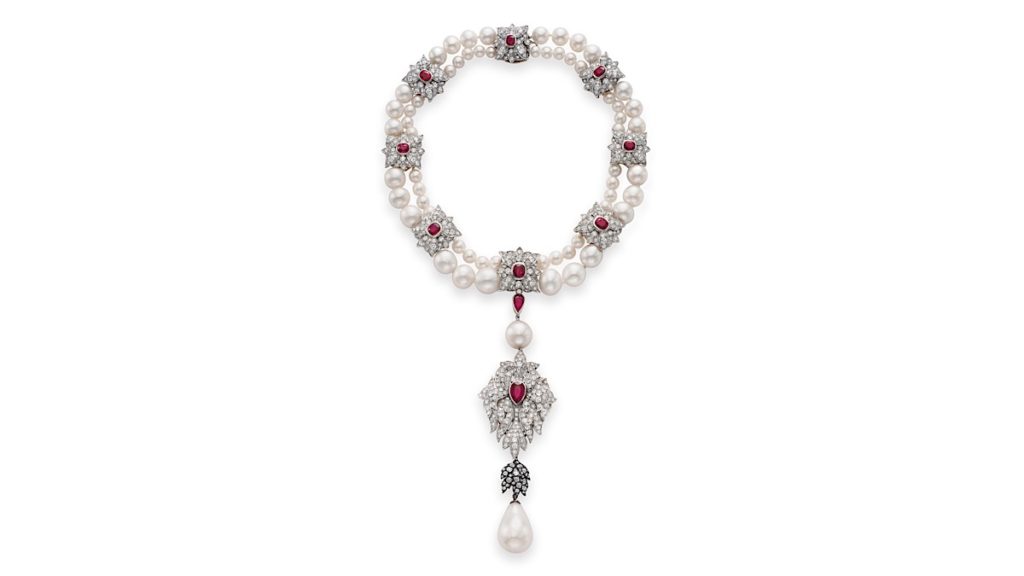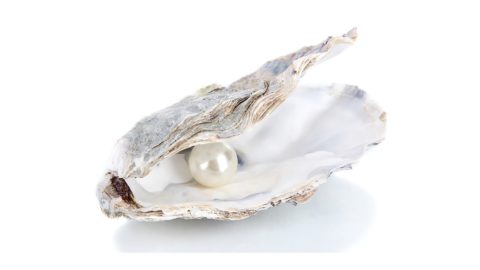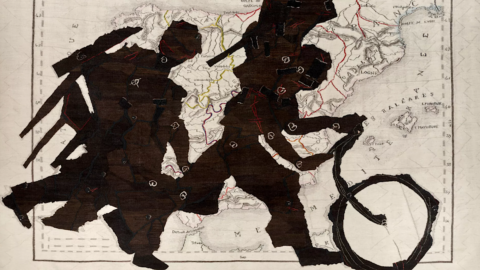In Ancient Rome, Lollia Paolina, wife of the Emperor Caligula, when she appeared in public wore strings and strings of pearls that adorned her chest, fell on her back, encircled her arms and ankles, even hung in fringes from the hem of her clothes . In natural or cultured pearls there is a rainbow of often changing reflections, a soft sheen that seems to arise from the pearl itself. For a mysterious correspondence, the color and the brightness of the pearls are affected by the influence of the wearer, of her skin and even of her mood, it is no coincidence that they can seem opaque around the neck of a gloomy personality and luminous around the neck of a brilliant woman. The pearl is the only gem created by a living organism, and the oldest known to man. However, if measured in terms of geological eras, the pearl is the last to come: in fact millions of years of intense heat AND pressure are necessary for the earth to generate a diamond: while the humble oyster can make a pearl in three or five years. Chemically, the pearl has nothing complicated. Crush one with the tongs, and you'll be left with a pinch of worthless lime powder. In fact, the pearly substance is pure calcium carbon, the same one found in a piece of plaster. With all our skill, with all the technical advances, we are unable to reproduce the special crystalline structure which attracts the light rays, breaks them up and refracts them there in such a way that gives the pearl its inimitable brilliance and colour. In reality, the pearl is a hardened secretion; the oyster deposits it around any foreign body that the mollusk cannot expel and which can be, depending on the case, a grain of sand, a particle of silt or other waste, or even an egg of the same mollusk, not expelled . The animal coats the irritating body with a shiny substance, mother-of-pearl, which is superimposed in very thin layers, welded to each other by an organic substance, conchiolin, similar to the material of which the ivory of the teeth is made. Virtually any bivalve mollusc can make a kind of pearl; but the pearls that have commercial value are almost exclusively those found in oysters of the genus margaritifera, which means, in fact, bearer of pearls. The secretions which form the pearl are produced by it from the same gels which form the shell, and therefore only the species whose shells are coated within the iridescent mother-of-pearl can manufacture precious pearls. None of the edible bivalve molluscs fall into this category: the "pearls" found found in oyster dishes are dull, without luster and, have no value. The major production of pearls is that of the Persian Gulf. But the vast majority of pearls that are sold today are not natural, but the less expensive Japanese cultured ones. To obtain them, smooth and round balls of mother-of-pearl are introduced into the oysters and the molluscs are put back into the water, for a period that usually ranges from three to five years, so that they coat the foreign body that irritates them with shiny matter. In the finished pearl, the number of mother-of-pearl layers is lower than that of the natural pearl of the same size, and, therefore, the luster is somewhat lower (at least in theory). Only a connoisseur can distinguish a natural pearl from a cultured one. In addition to the Japanese ones, Australia has also produced cultured pearls, implanting them in the Australian golden-rimmed oyster, the size of a saucer.
The pearls are of every colour, but in general each pearl closely resembles the mother-of-pearl of the mollusk that produced it; its color largely depends on the depth of the sea water and the chemical composition, as well as the diet of the oyster and its state of health. In some countries the most requested color is pink, while the black ones, much rarer , are highly sought after everywhere. Among the largest recorded pearls is a pearl in the form of a "drop" three inches long and about two inches thick, which was found by Persian pearl divers in 1628. The Mogul emperor Sharon Jahan bought it for his wife Mumtaz , the same for which he built the Taj Mahal and the Pearl Mosque. A century later the jewel, now known as "The Pearl of Asia" was part of the treasure of Ch'ien Lung, Manchu Emperor of China, and in 1799 was buried with the emperor's body. In 1900, tomb robbers stole the pearl and eighteen years later it reappeared in Hong Kong, where it was given, as collateral for a loan, to the work of the Catholic Missions. When the mortgage defaulted, the pearl was sold in Paris after WWII for an undisclosed price to an unidentified person. But pearls are always interesting on the market even for investment purposes, only that they must be natural and of excellent quality, alone or set with precious stones.

In this regard it is recalled that in 1969, Richard Burton paid $37.000 for "La Peregrina" at an auction in New York, before presenting it to his wife, Elizabeth Taylor, on her 37th birthday. One of the most famous pearls in the world weighing 223 carats and the chronicles tell that it was found about five hundred years ago (perhaps in 1513) in the Gulf of Panama (on Pearl Island) by an African slave who traded it for his freedom. Its presence in Spain is documented with certainty starting from the mid-1558th century, when it was offered by King Philip II as a gift to his second wife Maria Tudor, who died in 1969, who wore it as a pendant on a brooch and then to Elizabeth of Valois , his third wife. The pearl remained part of the Crown treasure until the Napoleonic era when it came into the hands of Giuseppe Bonaparte. After the defeat of the French army in the battle of Vitoria he is forced to leave the throne of Spain and into exile in England,. Here he sells the Peregrina pearl to the Marquis James Hamilton (later Duke of Abercorn). It remained the property of the Hamilton family until 1969, when it was sold to the Sotheby's auction house. In XNUMX Burton bought it and had it mounted on a necklace created by Cartier and the actress often wore it at events and during films. La Peregrina auctioned 2011 at Christie's New York realizing $11.842.500, more than five times its lowest estimate, making it at the time the most expensive natural pearl jewelry ever sold at auction.
Given the great availability of inexpensive cultured pearls and cheap fake pearls, today the pearl is proposed in large quantities and in more or less artistic or branded creations. However, the charm of wearing a "three strands worn" worn exclusively for a special occasion has been lost and it is not said that in modern times we do not even get to match the fabulous displays of oriental pearls in fashion. In the palace of the Gaekwar of Baroda, in Western India, in a basement there is a carpet 3 meters long and 2 wide, which it is said was created in the 700th century, for the boudoir of a beautiful woman. It is made of strung pearls: hundreds of thousands of pearls, in this case natural pearls.





